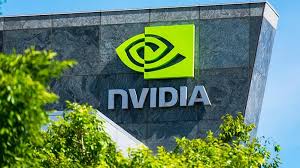ANALYSIS: Behind Nvidia's Strategy Amidst Market Scrutiny and Competitive Headwinds

ANALYSIS: Behind Nvidia's Strategy Amidst Market Scrutiny and Competitive Headwinds
SANTA CLARA, Calif. — A series of high-profile reports concerning executive stock sales, emerging competition, and geopolitical trade friction has intensified scrutiny on Nvidia Corp., the chipmaker at the center of the artificial intelligence boom. The developments have ignited a debate among investors and analysts over the sustainability of the company's meteoric rise, pitting a narrative of peaking fortunes against arguments of deeply-rooted, long-term market leadership.
While Nvidia's market valuation continues to reflect immense investor optimism, recent events have provided ammunition for skeptics and prompted a closer examination of the company's strategic footing. At the core of the debate is whether these challenges represent significant cracks in Nvidia's foundation or are simply the magnified, yet manageable, growing pains of a sector leader.
Decoding Executive Stock Transactions
One of the most prominent narratives creating headwinds stems from reports, notably from outlets like Fox Business, that company insiders, including CEO Jensen Huang, have sold more than $1 billion in company stock in recent months. This has fueled suggestions that leadership may be capitalizing on a perceived market peak, potentially signaling a lack of confidence in future growth.
However, corporate governance experts and market analysts offer a more nuanced perspective, frequently pointing to the standard practice of pre-scheduled trading plans. “For high-level executives whose compensation is heavily weighted in stock, these sales are a routine part of personal financial management,” said a senior analyst at a technology-focused equity research firm. “They use SEC Rule 10b5-1 plans to schedule transactions in advance to avoid any accusations of trading on non-public information. It’s diversification, not a distress signal.”
These sources argue that focusing on the large dollar amount is misleading following the stock's more than 200% surge over the past year. Instead, they contend the more relevant metric is the percentage of total holdings sold. Public filings indicate that the recent sales constitute a small fraction of the total shares and options held by the executives involved. Supporters of the company maintain that the leadership team remains heavily invested, with their personal wealth overwhelmingly tied to Nvidia's continued success, thus aligning their interests directly with those of long-term shareholders.
The Competitive Landscape and the 'Moat'
The narrative of Nvidia's 'unassailable' market position has also been challenged by specific reports of competitors gaining traction. Tech media has highlighted that some major AI labs are adopting hardware from rivals, with reports mentioning Google's Tensor Processing Units (TPUs) and Advanced Micro Devices (AMD) GPUs being utilized by prominent players like OpenAI for certain tasks. These instances are cited by critics as concrete evidence that customers are actively seeking alternatives, potentially eroding Nvidia's market share over time.
In response, industry analysts emphasize the distinction between experimentation and wholesale replacement. “Nvidia’s primary competitive advantage has never been just the chip; it’s the entire ecosystem,” noted a report from a leading technology consulting group. The CUDA software platform, a proprietary programming language for Nvidia's GPUs, has been the industry standard for over a decade. Millions of developers are trained on it, and a vast library of AI models and applications is built upon it. “The switching costs are astronomical, not just in terms of hardware, but in rewriting software and retraining talent,” the report continued.
While acknowledging that competitors like AMD and Google are producing capable hardware, proponents argue their adoption is often for niche applications, secondary workloads, or as a negotiating tactic by large customers to ensure supply chain diversity. This view is reinforced by Wall Street's consensus, where analysts continue to point to the upcoming Blackwell GPU architecture and GB300 NVL servers as setting a new performance benchmark that competitors will struggle to match. The sentiment is that while the 'monopoly' may face challengers, Nvidia's integrated hardware, software, and networking ecosystem creates a deep competitive 'moat' that remains largely intact.
Navigating Geopolitical and Financial Pressures
Finally, the financial impact of U.S. export restrictions to China remains a consistent theme in financial news coverage. Reports from outlets such as Benzinga have quantified multi-billion dollar inventory write-downs and projected revenue hits, underscoring the significant geopolitical risk baked into Nvidia's operations.
Company officials have addressed this challenge directly, stating they are in full compliance with government regulations while working to mitigate the impact. Nvidia has since developed and begun shipping alternative, compliant versions of its chips to the Chinese market. Furthermore, financial analysts bullish on the company argue that the explosive demand from sovereign AI initiatives and enterprise customers in the Americas, Europe, and other parts of Asia is more than compensating for the restrictions.
“The China situation, while not insignificant, has been largely priced in by the market,” stated one investment bank's recent note to clients. “To focus on it is to miss the much larger story: the tidal wave of global demand for accelerated computing.” This perspective suggests that while the China revenue stream has been curtailed, the overall addressable market for Nvidia has expanded so rapidly elsewhere that the company's growth trajectory is not fundamentally threatened.
As the market continues to process these competing signals, the central question for investors remains. The outcome will depend on whether the recent headlines about insider sales and competitor inroads represent a fundamental shift in the AI landscape, or are merely the expected turbulence for a company navigating an unprecedented and transformative technology cycle.

